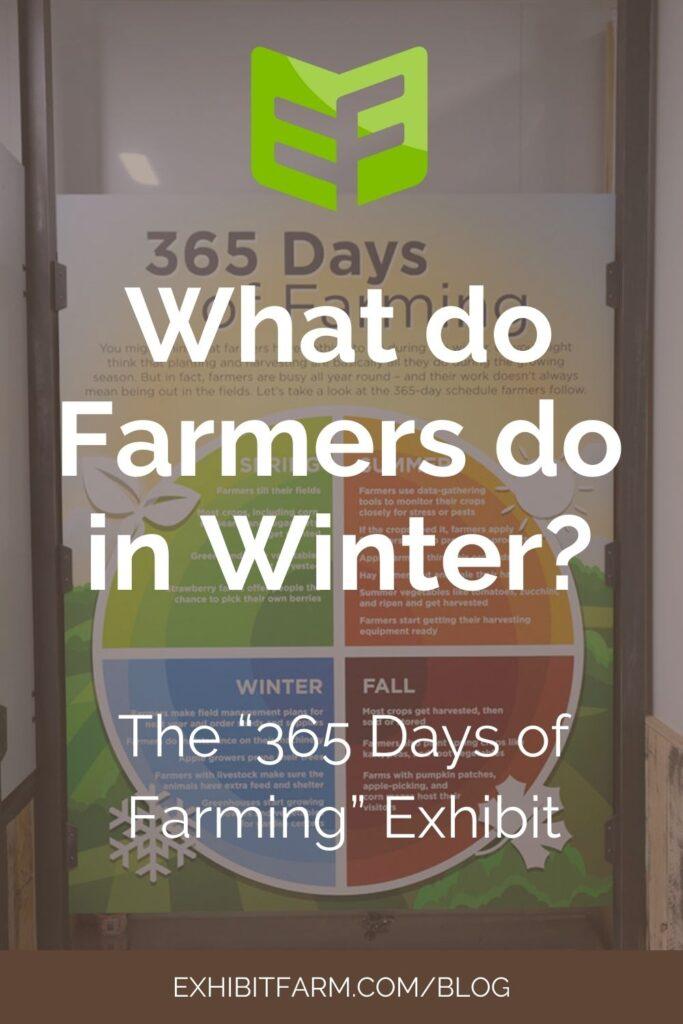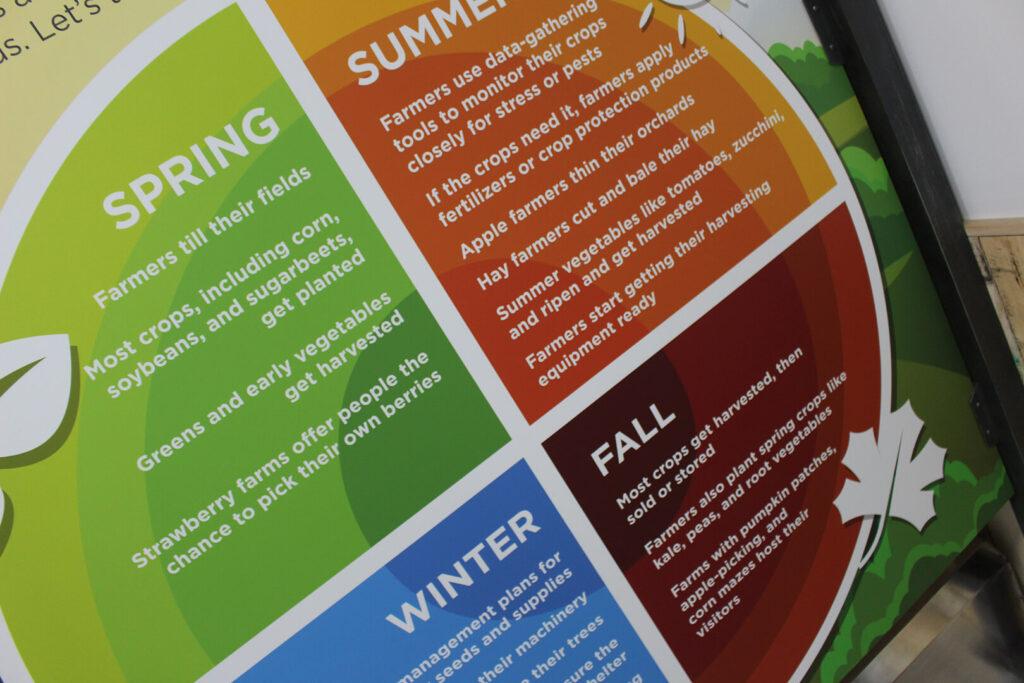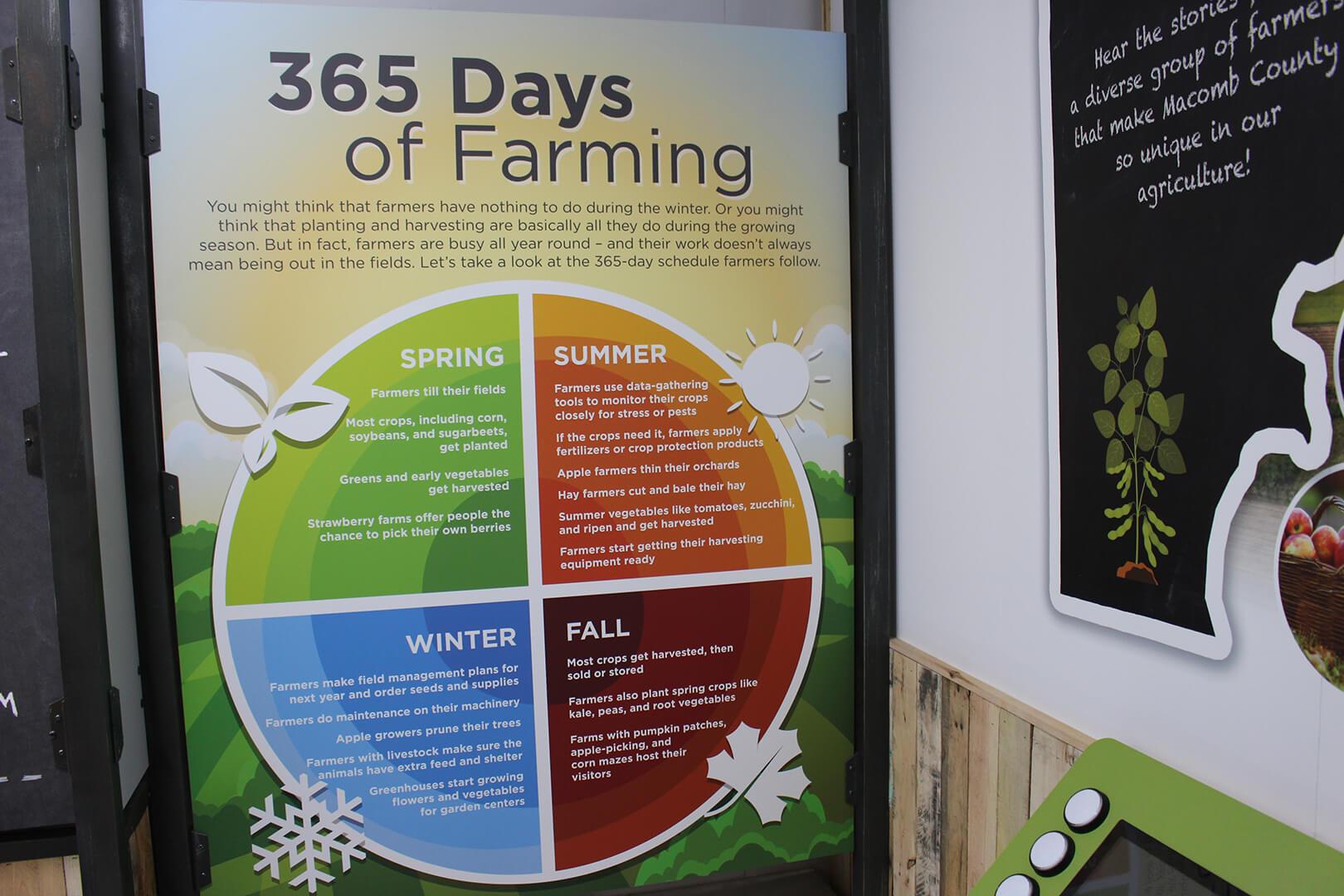
Most consumers know farmers plant seeds in the spring and harvest crops in the fall. What do farmers do in the winter, though? Nothing grows then, right?
Those of us in the ag industry know that’s not quite right. It ignores all the fall-planted crops like kale and peas, for one thing. And, of course, the cattle, hog, and poultry ranchers out there don’t follow the same sort of cycle for their “crops”. Winter for them means just as much animal care as in the summer, although the chores might be different.
Farming is truly a 365 days kind of job. And farmers deserve to be recognized for it. So to help consumers learn about all the work it takes to put food on people’s tables, Macomb County Farm Bureau sponsored an exhibit showing the year-round nature of farming. It covers not just what farmers do in winter, but also what they do in summer, fall, and spring.
A Broad Perspective
Our first challenge when we started designing this exhibit was making sure we reflected the wide variety in the agriculture industry. Like we said, most consumers already have a vague idea of the cycle for plants like corn — plant in the spring, harvest in the fall. But that leaves out key sectors of the ag industry. A livestock operation follows a very different schedule from a cash crop farm, which is very different from a fruit orchard.
We only had space for a few bullet points in each section of the exhibit. So naturally, we couldn’t talk about all the different commodity types. (Plus, some commodities aren’t even ready for harvest after 365 days, like timber.) But we made sure that livestock, cash crops, vegetable crops, and permaculture (specifically, fruit) each got a few mentions.
(To read all the bullet points, check out the page dedicated to this exhibit in our portfolio.)
What Farmers do in Winter — and Other Seasons
We didn’t just list the highlights, like when different crops get harvested. We also included info about the pre-harvest crop tending, with bullet points like “Apple farmers thin their orchards in summer.” Without those tasks, there might not be any harvest at all, so they’re worth recognizing.

Similarly, we mentioned jobs that consumers might not think of as farming at all — things like doing maintenance on machinery or ordering new seeds. They aren’t exactly field work, but they are vital parts of farming that make the more visible work possible.
We even included agritourism activities under the fall section. Again, is it directly related to producing food? Not necessarily, but agritourism helps many farms make ends meet, and it’s certainly a lot of work for the farmers. So it deserves a call-out too.
The “365 Days of Farming” exhibit lets Macomb County Farm Bureau give consumers a glimpse of all the hard work it takes to produce the food, fuel, and fiber we rely on. It answers the question of “What do farmers do in winter?” that people often wonder about. But it also helps increase appreciation of the vital work farmers do — in all seasons, 365 days a year.
